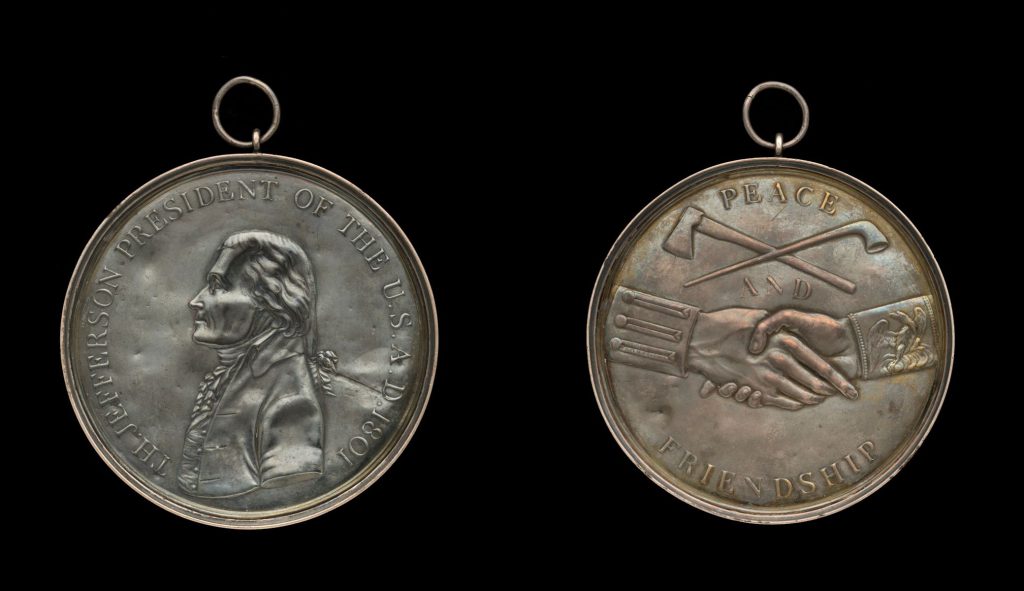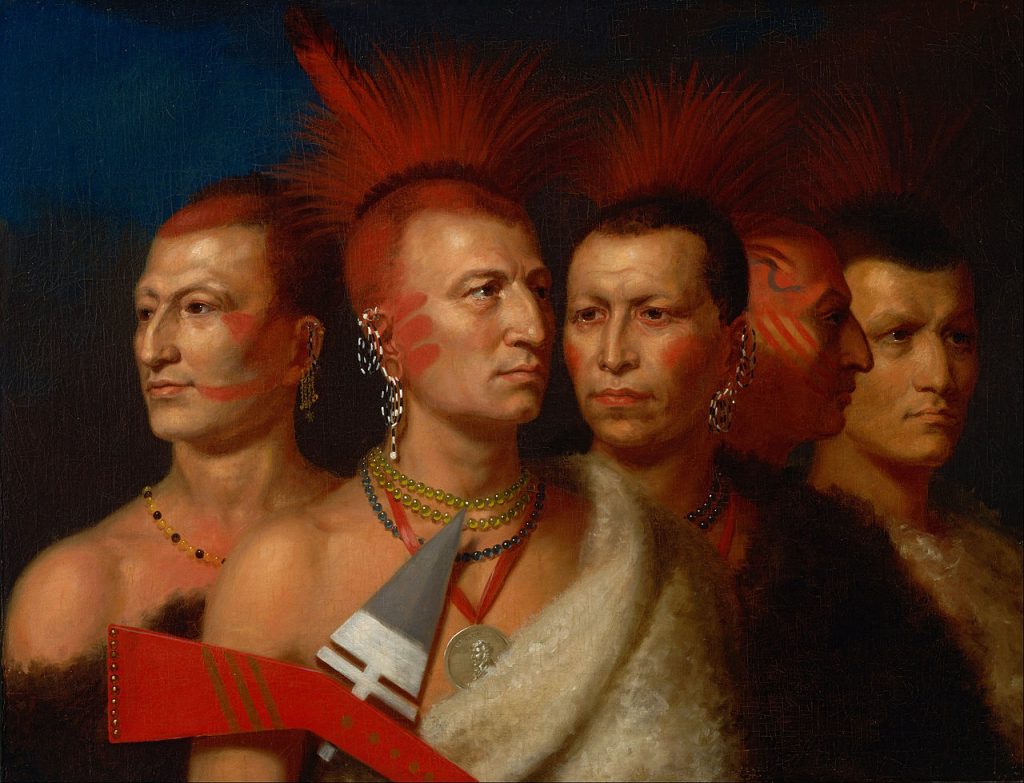Were Peace Medals the Price of Loyalty?
Gift-giving is common to all human societies; it’s one of the behaviors that makes us human. We give gifts to celebrate holidays, birthdays, and weddings, not to mention at baby showers and a host of other occasions.
Gift-giving has also long been a central feature of modern international diplomacy. In July 2003, Argentine President Néstor Kirchner gave then U.S. President George W. Bush 300 pounds of raw lamb meat as a gift. In the history of gift-giving between heads of state, Kirchner’s gift was thoughtful—Bush was a rancher, after all—and practical, if rather peculiar.
But gift-giving rarely occurs without some type of obligation to reciprocate. French sociologist Marcel Mauss made this argument in his book The Gift: Forms and Functions of Exchange in Archaic Societies. Focusing on the many layered obligations inherent in gift-giving and receiving, he observed that in addition to the physical transfer of objects, gift-givers demonstrate generosity, which usually garners respect. By accepting a gift, the receiver in turn acknowledges (even if only implicitly) an obligation to reciprocate at some point, even if it’s in the distant future and even, quite possibly, by giving a gift to someone else. If a receiver fails to reciprocate in some manner, she or he may lose respect, and possibly social standing, by being seen as an ungenerous person.
Thus when gifts are exchanged, bonds are created between people. If the people in question are leaders, like Kirchner and Bush, their bond may be symbolic of broader relationships between families, villages, states, or even empires. Gift-giving helps to create, solidify, and maintain human relationships of all kinds. But sometimes the meaning of the gift isn’t the same for both parties, as was the case for “peace medals.”
Beginning in the late 18th century and continuing through much of the 19th century, the U.S. government offered peace medals as gifts to leaders of Native American communities. The British, French, and Spanish governments had long used medals stamped with images of their respective kings in international diplomatic efforts; the U.S. began copying that practice using images of the president as soon as the presidency came into being in 1789.
The first peace medals were made of a simple oval plate of silver about 4 inches wide and 6 inches tall. An image of the first U.S. President George Washington was etched on one side and an eagle or other symbol of peace was etched on the other.
But the most famous peace medals are probably those of Thomas Jefferson, who served as U.S. president from 1801 to 1809. Unlike the engraved Washington peace medals, which tend to wear down quickly, the Jefferson peace medals were minted with a raised cameo profile of the president pressed into one sheet of silver. A second sheet of silver, struck with a raised image of a crossed tomahawk and peace pipe, two hands shaking (of a Euro-American and a Native American), and the words “peace and friendship,” composed the reverse side of the medal.
No matter which president was on the front, peace medals were important instruments in U.S. diplomacy with Native American tribes across North America. They were offered as gifts of introduction and to celebrate treaty signings and other significant events. Clearly, they were intended to demonstrate the power, wealth, and prestige of the U.S. government, and by extension, the supposedly civilizing influence of Euro-American society on Native Americans.
It was with such intentions that the explorers Meriwether Lewis and William Clark distributed 89 Jefferson peace medals during their famous expedition through the Louisiana Territory and to the Pacific Northwest from 1804 to 1806. Large medals, just over 4 inches in diameter, were reserved for the most important leaders they met; medium (just under 3 inches in diameter) and small (1.8 inches in diameter) medals were given to individuals deemed of lesser importance.
As a tool of diplomacy, peace medals waned in significance after 1865, for the U.S. government became less interested in compromising with Native American communities. The last presidential peace medal was minted in honor of President Benjamin Harrison in 1889. Within a few short years, America’s western frontier closed and the Indian Wars ended, with the U.S. government the victor and Native Americans effectively “wards” of the state.
On the face of it, the presentation of a peace medal seems like a fairly straightforward activity. We now know, however, that peace medals meant different things to different people almost as soon as they were given. Whereas U.S. government agents believed that a binding agreement of allegiance was created as soon as a peace medal was accepted, at least some Native American leaders believed no such thing. Rather, they assumed that they had simply accepted a gift—no binding allegiance to the U.S. was either implied or created.
Peace medals also fell into a long-established Native American practice of wearing shell gorgets—pendants with engraved images of various kinds—as necklaces to communicate wealth, power, and status. So even though they arguably symbolized the tangible manifestations of U.S. government oppression and betrayal, peace medals became popular status symbols and even, over time, treasured heirlooms in Native American communities and families. They were often worn as necklaces, hung over the chest on a lanyard around the neck, during formal occasions.
Though peace medals are particularly fraught, gift-giving between nations is inherently loaded with personal, political, and social meaning.
On May 24, Pope Francis gave U.S. President Donald Trump a copy of his papal encyclical “Laudato Si’,” in which he makes the case for greater cooperation between science and religion in order to fight the effects of climate change. Eight days later Trump announced he was pulling the U.S. out of the Paris climate agreement. The pope’s gift fell on deaf ears. I bet Trump would’ve been happier with a peace medal.
If you’d like to learn more, watch this video from The Brain Scoop.



























